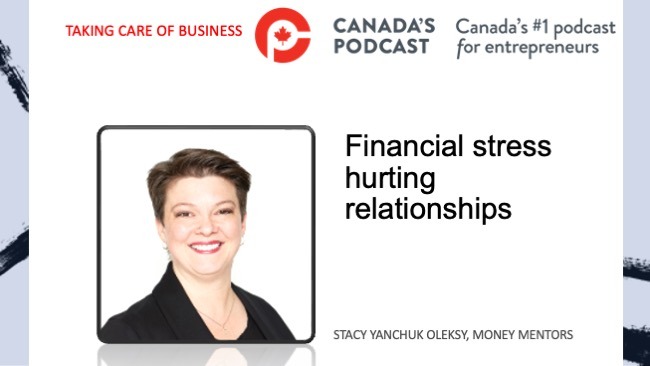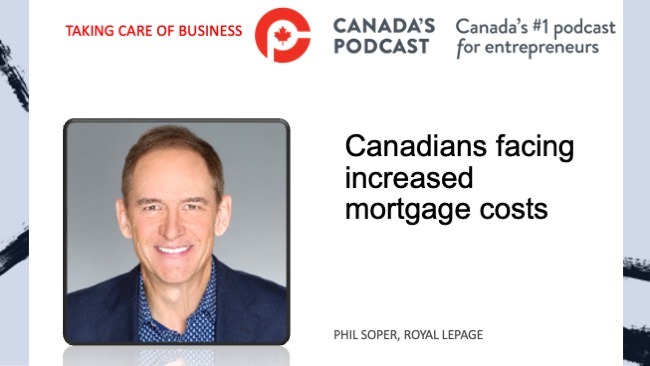The finances of Canadian corporations have improved dramatically over the last three years, as strong economic growth and high commodity prices provided a boost to profits and cash reserves, but with the economy set to weaken over 2023, corporate resilience will be tested, though improved balance sheets will act as a significant buffer, says a new report by TD Economics.

Ricardo Esquivel
“The balance sheet improvement is evident across most sectors, although differences are apparent due to existing debt obligations, the amount of cash holdings, and the degree of earnings variability,” said the report.
“Corporate Canada has been on an incredible run over the last few years. The economic rebound brought about a surge in profits and filled corporate coffers. Debt ratios subsequently declined and the cash hoard on corporate balance sheets has swelled (Table 1). This puts businesses on favourable footing heading into the much-anticipated economic slowdown. Even across industries, firms appear well-positioned to withstand the impact of lower economic growth and high interest rates.”
Table 1: Canada Corporate Debt
| Year | Gross Debt/GDP*, % | Net Debt/GDP*,% | Total Assets/Gross Debt*, % | Cash/Gross Debt*, % | Profits/Gross Debt*, % | Interest Coverage Ratio |
| 2022 | 75.1 | 43.5 | 484.0 | 42.2 | 18.4 | 5.8 |
| 2021 | 80.7 | 48.3 | 450.1 | 40.2 | 17.0 | 5.5 |
| 2020 | 86.8 | 54.5 | 400.3 | 37.2 | 13.0 | 3.6 |
| 2010-2019 | 64.2 | 42.4 | 484.8 | 34.0 | 18.7 | 3.0 |
| 2000-2009 | 57.2 | 42.2 | 485.2 | 26.6 | 24.2 | 2.3 |
| 1990-1999 | 64.5 | 57.0 | 348.8 | 11.6 | 17.5 | 0.7 |
The report said corporate debt levels have increased by 18 per cent since the end of 2019, but the associated risk is less than meets the eye.
“Despite the recent pullback in the latter half of 2022, profits as a per cent of GDP are at their historical average of the prior decade, after increasing swiftly from their pandemic low. Importantly, firms have banked their profits over the last three years, causing cash to now account for 42 per cent of total debt – well above the 30 per centaverage over the prior two decades. In addition, total assets as a share of debt have increased markedly since mid-2020 and are hovering close to levels last seen in 2014. At the same time, many firms have locked in a significant amount of debt at longer-term fixed rates. This has allowed the interest coverage ratio – a commonly referred to financial metric used to assess a firm’s ability to meet its interest obligations – to increase well above its long-run average,” said TD Economics.
Table 2: Canada Corporate Debt: Industry Breakdown
| Industry | 2022 | 2021 | 2020 | 2010-2019 | 2000-2009 | 1990-1999 |
| Gross Debt, Billions $ | ||||||
| Real Estate | 355 | 320 | 305 | 195 | 80 | 65 |
| Manufacturing | 145 | 146 | 147 | 126 | 94 | 71 |
| Construction | 127 | 104 | 99 | 68 | 29 | 20 |
| Oil & Gas | 94 | 100 | 111 | 102 | 50 | 20 |
| Transportation | 92 | 79 | 74 | 45 | 22 | 12 |
| Cash/Gross Debt, % | ||||||
| Real Estate | 14 | 14 | 14 | 15 | 10 | 5 |
| Manufacturing | 53 | 50 | 45 | 40 | 32 | 18 |
| Construction | 43 | 50 | 52 | 57 | 46 | 27 |
| Oil & Gas | 10 | 9 | 7 | 14 | 13 | 5 |
| Transportation | 22 | 27 | 28 | 37 | 33 | 29 |
| Total Assets/Gross Debt, % | ||||||
| Real Estate | 303 | 298 | 293 | 291 | 264 | 219 |
| Manufacturing | 864 | 815 | 792 | 778 | 747 | 539 |
| Construction | 406 | 453 | 458 | 470 | 460 | 415 |
| Oil & Gas | 642 | 573 | 523 | 500 | 510 | 330 |
| Transportation | 325 | 320 | 310 | 288 | 270 | 266 |
| Interest Coverage Ratio | ||||||
| Real Estate | 1.5 | 1.7 | 1.6 | 1.8 | 1.1 | -0.1 |
| Manufacturing | 9.6 | 8.1 | 4.6 | 2.0 | 0.9 | 0.3 |
| Construction | 2.5 | 4.6 | 6.6 | 8.5 | 6.5 | 3.8 |
| Oil & Gas | 12.8 | 8.5 | -2.1 | 5.1 | 8.2 | 4.9 |
| Transportation | 5.0 | 4.1 | 4.4 | 4.7 | 3.3 | 1.9 |
“Our outlook also considers the growing stress likely to be felt on the consumer side. We expect significant spending adjustments, where the Canadian consumer prioritizes necessities. For this reason, spending at retail stores, on manufactured goods, and on entertainment (arts, food, etc.), will likely suffer. For retail and manufacturing, their improved financials should help them weather the slowdown in the quarters ahead. That said, firms in arts, food, and accommodation – which are still working to improve their financial standing after a significant pandemic hit – appear more vulnerable. A slowdown that cuts their earning potential would be coming at a very inopportune time,” said the report.
“Commodity prices will also play a big part. We have already seen a 34 per cent peak to trough decline in the price of oil on the back of slowing global growth. Most other commodity prices have also pulled back significantly from their peaks last year. But with most of the recalibration done and China in the process of reopening, the oilpatch and other commodity-oriented firms look well positioned to succeed over 2023.”
 (Mario Toneguzzi is Managing Editor of Canada’s Podcast. He has more than 40 years of experience as a daily newspaper writer, columnist, and editor. He worked for 35 years at the Calgary Herald, covering sports, crime, politics, health, faith, city and breaking news, and business. He works as well as a freelance writer for several national publications and as a consultant in communications and media relations/training. Mario was named in 2021 as one of the Top 10 Business Journalists in the World by PR News – the only Canadian to make the list)
(Mario Toneguzzi is Managing Editor of Canada’s Podcast. He has more than 40 years of experience as a daily newspaper writer, columnist, and editor. He worked for 35 years at the Calgary Herald, covering sports, crime, politics, health, faith, city and breaking news, and business. He works as well as a freelance writer for several national publications and as a consultant in communications and media relations/training. Mario was named in 2021 as one of the Top 10 Business Journalists in the World by PR News – the only Canadian to make the list)About Us
Canada’s Podcast is the number one podcast in Canada for entrepreneurs and business owners. Established in 2016, the podcast network has interviewed over 600 Canadian entrepreneurs from coast-to-coast.
With hosts in each province, entrepreneurs have a local and national format to tell their stories, talk about their journey and provide inspiration for anyone starting their entrepreneurial journey and well- established founders.
The commitment to a grass roots approach has built a loyal audience with over 120,000 downloads and thousands of subscribers on all our social channels and YouTube. Canada’s Podcast is proud to provide a local, national and international presence for Canadian entrepreneurs to build their brand and tell their story.





